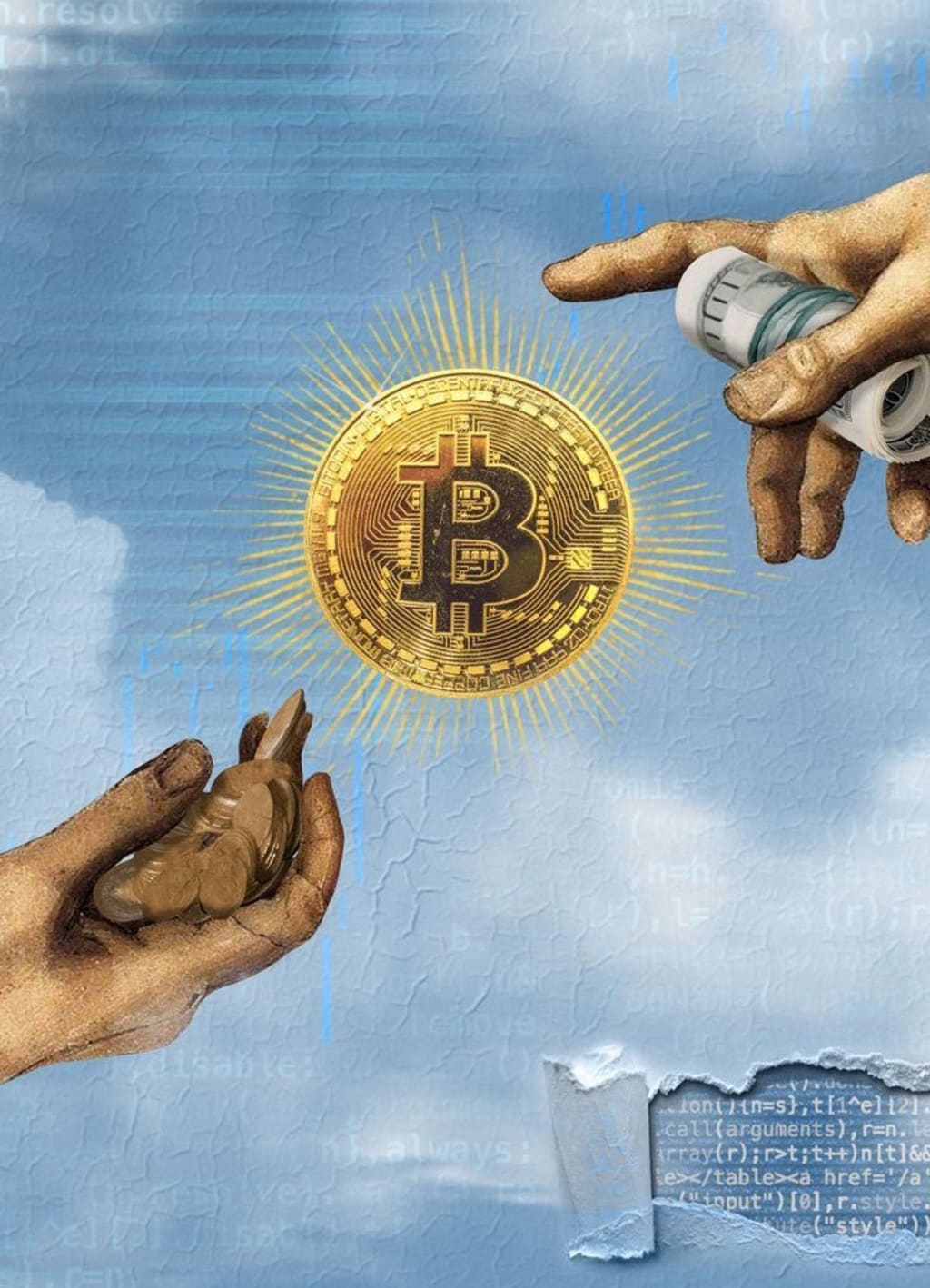Embracing the Digital Renaissance: Unlocking the Power of NFT
Exploring the Revolutionary World of Non-Fungible Tokens

In the ever-evolving landscape of technology and innovation, a new trend has emerged that is captivating the world: Non-Fungible Tokens, or NFTs. From digital art and virtual real estate to collectibles and music, NFTs have taken the digital world by storm, revolutionizing the way we buy, sell, and own digital assets. In this blog post, we delve into the exciting realm of NFTs, exploring their origins, their impact on various industries, and the potential they hold for creators and enthusiasts alike.
Laying the foundation by explaining what NFTs are and how they differ from traditional cryptocurrencies. We explore the concept of digital ownership and the unique properties that make NFTs one-of-a-kind. From blockchain technology to smart contracts, we unravel the technical aspects behind NFTs and shed light on their security and authenticity . NFTs, or Non-Fungible Tokens, are a type of digital asset that represent ownership or proof of authenticity of a unique item or piece of content, such as digital art, music, videos, collectibles, virtual real estate, and more. Unlike traditional cryptocurrencies like Bitcoin or Ethereum, which are fungible and can be exchanged on a one-to-one basis, NFTs are indivisible and have unique properties that make them distinct and irreplaceable. One key difference between NFTs and traditional cryptocurrencies is their uniqueness. Each NFT is one-of-a-kind and carries distinct attributes or characteristics that set it apart from other tokens. This uniqueness is achieved through the use of blockchain technology, specifically utilizing smart contracts, which establish the ownership and authenticity of the digital asset.
Another difference is that NFTs have inherent value beyond their monetary worth. While cryptocurrencies like Bitcoin or Ethereum derive their value primarily from their market demand and utility as a medium of exchange, NFTs derive their value from their uniqueness, scarcity, and the perceived value assigned to them by collectors, enthusiasts, and the market.
The environmental impact of NFTs has been a topic of concern and discussion within the digital art and blockchain communities. NFTs, like other blockchain-based technologies, rely on energy-intensive processes for verification and transaction validation. The most common blockchain network used for NFTs, Ethereum, currently operates on a proof-of-work (PoW) consensus mechanism, which requires substantial computational power and energy consumption.
The energy consumption associated with PoW blockchains has raised questions about the carbon footprint and sustainability of NFTs. Critics argue that the high energy usage of blockchain networks contributes to carbon emissions and exacerbates the environmental challenges we face
The applications of NFTs across creative industries are vast and diverse, revolutionizing the way artists, musicians, designers, and other creatives interact with their audience and monetize their work. One prominent area where NFTs have made a significant impact is in the world of digital art. Digital art has long struggled with issues of authenticity, ownership, and scarcity. With NFTs, artists can now create and sell unique digital artworks, establishing verifiable ownership and provenance on the blockchain.
This allows artists to monetize their creations directly, bypassing traditional intermediaries and gaining more control over their work. Renowned artists have embraced the NFT space, selling their masterpieces as NFTs with remarkable success. This has opened up new avenues for artists to showcase their talent, gain recognition, and reach a global audience. Previously, digital artists often faced challenges in selling their work and receiving appropriate compensation for their efforts. NFTs provide a solution by creating a marketplace where digital artworks can be bought, sold, and collected, similar to traditional art markets.
Moreover, NFTs have expanded the possibilities for artists to explore new mediums and art forms. Artists can experiment with interactive and generative art, virtual reality experiences, and even tokenized physical art. NFTs allow for the creation of limited editions and special collections, adding an element of exclusivity and scarcity that drives value for collectors.
Beyond digital art, NFTs have found applications in other creative industries as well. Musicians can release limited edition albums or unique audiovisual experiences as NFTs, enabling direct engagement with their fans and potential new revenue streams. Fashion designers can create digital fashion items, allowing consumers to own and display exclusive virtual apparel. Even virtual real estate and virtual goods within gaming and virtual reality platforms can be tokenized as NFTs, providing a new level of ownership and investment opportunities. We discuss the concept of royalties and how artists can continue to earn from their NFTs even after the initial sale.
Additionally, we delve into the world of music, where musicians are leveraging NFTs to create unique experiences for their fans, such as exclusive access to concerts, backstage passes, and limited edition merchandise.
In the film and entertainment industry, NFTs offer exciting opportunities for fans to own unique and exclusive moments from their favorite movies. Imagine owning a token that represents a specific scene or iconic moment from a film, such as a memorable dialogue exchange, a thrilling action sequence, or a touching emotional moment. These NFTs can be traded and collected, creating a sense of ownership and connection to the cinematic world
Moving beyond movies, the concept of virtual real estate is also gaining traction in the NFT space. Virtual worlds, such as Decentraland and Cryptovoxels, offer decentralized platforms where individuals can buy, sell, and trade virtual land. Each parcel of virtual land is represented as an NFT, and owners can build and customize their digital properties within these virtual realms.
For instance, in Decentraland, users can purchase plots of virtual land and develop them into virtual storefronts, art galleries, concert venues, or any other creative concept they envision. These virtual properties can be monetized through hosting events, selling virtual goods, or leasing spaces to other users. The ownership of virtual land as NFTs provides a tangible and tradable asset within the digital landscape
The skyrocketing prices of certain NFTs have captured widespread attention and sparked discussions about the role of scarcity and perceived value in driving their market value. One of the key factors contributing to the high prices is the inherent scarcity of NFTs.
Scarcity plays a crucial role in economics and psychology. When a digital asset is issued as an NFT, its scarcity is often intentionally established through limited editions or unique properties. For example, an artist may create only a limited number of copies of their artwork as NFTs, or an event organizer may tokenize a specific moment in time that can never be replicated. This scarcity creates a sense of exclusivity and rarity, driving up the perceived value of the NFT.
Perceived value is subjective and varies from person to person. What one individual considers valuable, another may not. However, in the NFT market, perceived value can be influenced by factors such as the reputation and popularity of the creator, the uniqueness and quality of the digital asset, and the demand and enthusiasm from collectors and enthusiasts.
Celebrities, renowned artists, and established brands entering the NFT space have attracted significant attention and contributed to the surge in prices. The association of these well-known figures with specific NFTs adds prestige and desirability, increasing their perceived value.
Furthermore, social media and online communities play a vital role in driving the hype and demand for certain NFTs. The digital nature of NFTs allows for easy sharing, showcasing, and discussion on various platforms. As collectors and enthusiasts share their purchases and express their admiration for specific NFTs, it creates a sense of FOMO (Fear of Missing Out) among others, fueling the desire to own those coveted assets and driving up their prices.
It's important to note that the NFT market is still evolving, and its long-term sustainability and stability are subjects of ongoing debate. Critics argue that the current frenzy may be a result of speculation and market hype, with concerns about potential price bubbles and the longevity of high valuations.
NFTs have the potential to democratize the art world by providing a platform for artists who may have traditionally struggled to gain recognition within established systems. Artists from marginalized backgrounds, indigenous communities, and emerging economies can now showcase their work on a global stage and directly connect with a supportive audience. Additionally, NFTs can serve as a means of preserving cultural heritage by tokenizing traditional art forms and artifacts, ensuring their digital representation for future generations. We also explore how NFTs can be leveraged for charitable causes, with artists and creators dedicating a portion of their sales to support social initiatives and nonprofits, creating a positive ripple effect beyond the digital realm.
Within the NFT space, the issue of copyright infringement and intellectual property rights is a critical concern that requires careful attention. As NFTs gain popularity, it becomes increasingly important for artists to protect their work and establish clear ownership rights to prevent unauthorized use and infringement.
Copyright infringement occurs when someone uses, reproduces, or distributes a copyrighted work without the permission of the original creator. With the rise of NFTs, there have been instances where individuals tokenize and sell artworks without the consent of the artist, essentially profiting from someone else's creative effort. This raises ethical and legal concerns surrounding the protection of intellectual property rights.
To address these issues, artists must take proactive steps to safeguard their work.
Copyright Registration: Artists should consider registering their original creations with relevant copyright authorities. Copyright registration provides legal evidence of ownership and strengthens their position in case of copyright disputes.
Watermarking and Metadata: Adding visible or invisible watermarks to digital artworks can help deter unauthorized use and establish the original creator. Including accurate metadata and information about the artwork's ownership within the NFT can also enhance transparency and traceability.
Smart Contracts and Terms of Sale: Artists can use smart contracts, which are self-executing agreements embedded within the blockchain, to define the terms of sale and establish licensing rights. These contracts can outline how the NFT can be used, reproduced, or resold, providing clarity and protection for the artist's intellectual property.
Establishing clear ownership rights is crucial not only for artists but also for the overall credibility and sustainability of the NFT market. It ensures that artists receive proper recognition and compensation for their creations and fosters a culture of respect for intellectual property rights within the NFT community.
About the Creator
Mariam Sikandar
As a writer, my role is to create engaging and informative written material that is fun to read!
Enjoyed the story? Support the Creator.
Subscribe for free to receive all their stories in your feed. You could also pledge your support or give them a one-off tip, letting them know you appreciate their work.






Comments
There are no comments for this story
Be the first to respond and start the conversation.